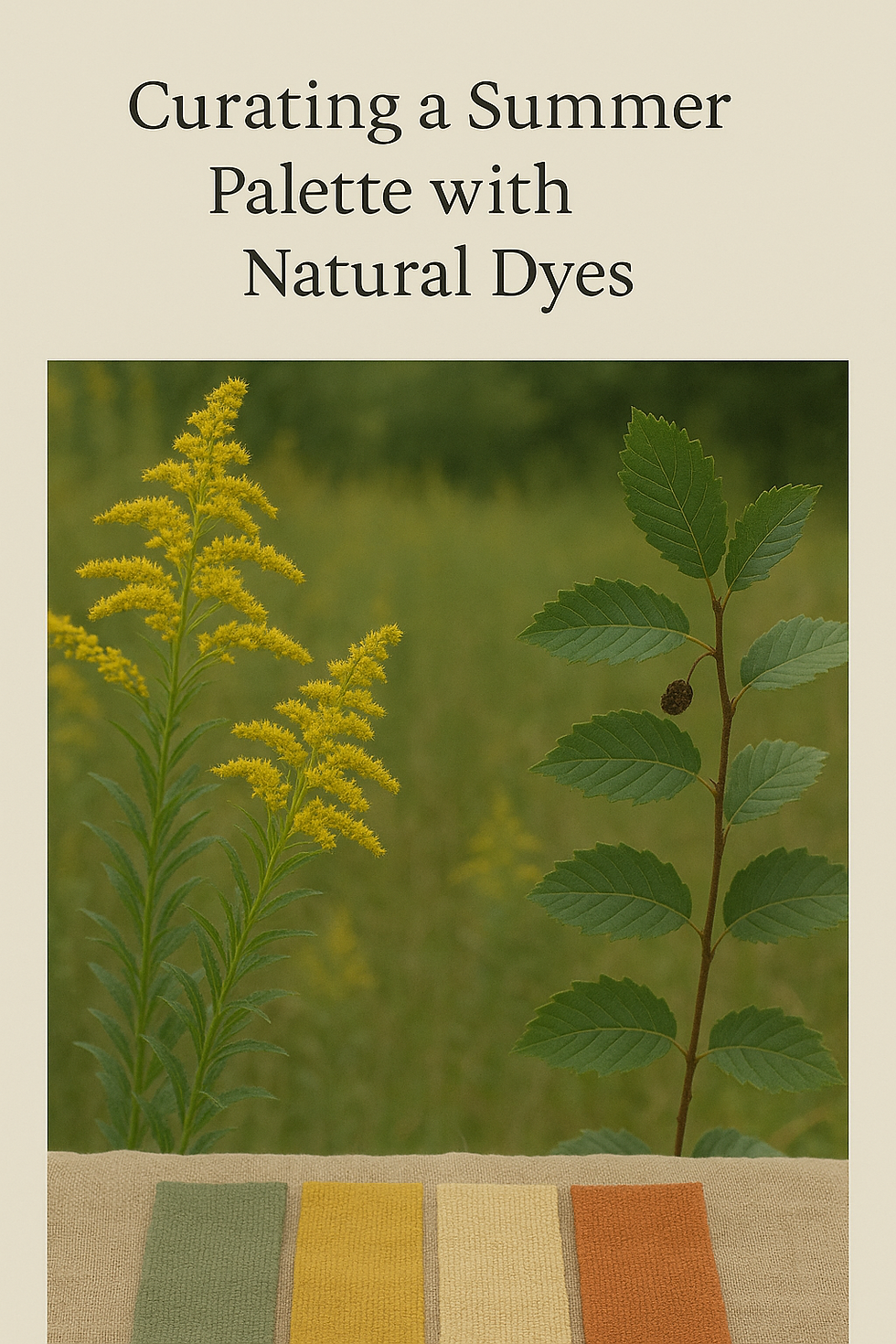Compound colours; Indigo and Weld greens
- Suzanne Dekel
- Mar 17, 2020
- 3 min read
Updated: Apr 29, 2020
Some colours (especially light fast) are hard to create with natural dyes, certain shades of purple, orange and greens. For these shades we mix two different colours, like a simple colour wheel.
Blue + yellow = green
Red + yellow = orange
Red + blue = purple

In a previous blog I showed how you can make a great green using logwood. Now I will show you how to create more variated shades of green using indigo instead of logwood. For the yellow I used weld powder again, so to have less variables.

I made the indigo vat using sodium hydrosulphite and the last of the Indonesian indigo blend I had, which is the nicest to work with of anything I have ever tried.
The recipe was the usual I use in my method (check here), no need to re-invent to wheel over something I have been doing for a few years now. In the 18th century they would usually have used the cheaper pastel (woad) vat for the ground blue, but nowadays very few people have a vat like that, even though I am trying to get my hands on some woad for this purpose.
Berthollet writes in his book Elements of the Art of Dyeing (1791);
The blue ground which is given by the vat should be proportionated to the kind of green that is wanted. Thus for verd canard, the green like that of the drake's neck, a deep blue is required; for parrot green, a sky-blue ground; for verd naissant, nascent green, one of white-blue (bleu blanchi.)
I took two types of silk I keep for experiments; silk organza and a type of satin bride silk. Each of the silk got dyed in a climbing number of dips, because the vat was not particularly strong the difference was not so big between the samples. With indigo that is how works; the colour build up according to how long your dips are and how often you dip. Air and oxidise fully between dips.
After the indigo dyeing, the samples got neutralised with a bit of Ph neutral soap and dried. Then cut up, marked again, divided in 4 and weighed. Total amount was 160 gram
2/4 of the samples (8o gram) were mordanted in aluminium sulphate at 10% WOF in a cold bath overnight, that is 8 grams of AS.
1/4 kept for reference of the original blue, and 1/4 to be tanned/dyed in Myrobalan extract at 8%.

The next day;
1/4 got overdyed with 10%WOF weld powder.
1/4 got overdyed with 30%WOF weld powder.
1/4 got overdyed with 8% Myrobalan extract.
I heated the weld baths to about 70ºC and kept them at that hight for about 50 minutes, and then let it cool down in the dye bath but you could do it the way the old dye masters would; build up the colour by dyeing in short intervals and stopping when you are satisfied with the hue you have. Of course you would have to dry your samples for this, because the final result is always lighter/different from when they are wet.
The results;

Silk organza FLTR indigo, indigo + weld 10%, indigo + weld 30%
From top to bottom 1-2-4-6 dips of indigo
Silk satin FLTR indigo, indigo + weld 10%, indigo + weld 30%
Each sample fRTL 1-2-4-6 dips of indigo
The full set

the myrobalan became a teal on the satin, and a quite ugly brown green on the organza,










